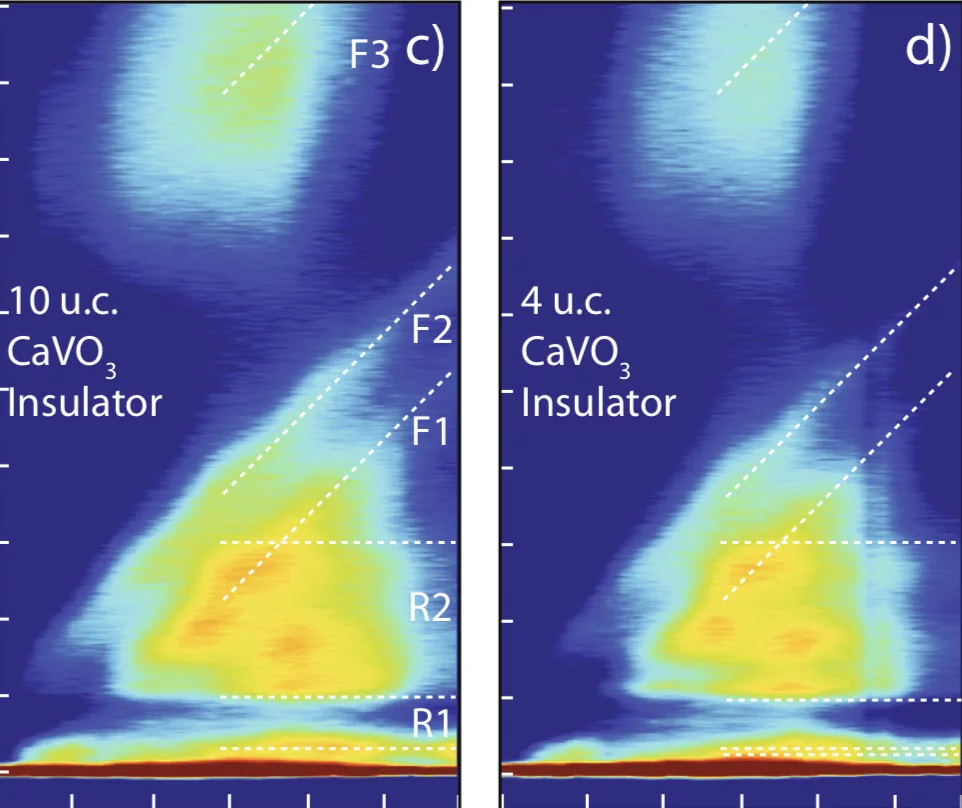Understanding and controlling the electronic structure of thin layers of quantum materials is a crucial first step towards designing heterostructures where new phases and phenomena, including the metal-insulator transition (MIT), emerge. Here, we demonstrate control of the MIT via tuning electronic bandwidth and local site environment through selection of the number of atomic layers deposited. We take CaVO3, a correlated metal in its bulk form that has only a single electron in its V4+ 3d manifold, as a representative example. We find that thick films and ultrathin films (≤6 unit cells, u.c.) are metallic and insulating, respectively, while a 10 u.c. CaVO3 film exhibits a clear thermal MIT. Our combined X-ray absorption spectroscopy and resonant inelastic X-ray scattering (RIXS) study reveals that the thickness-induced MIT is triggered by electronic bandwidth reduction and local moment formation from V3+ ions, that are both a consequence of the thickness confinement. The thermal MIT in our 10 u.c. CaVO3 film exhibits similar changes in the RIXS response to that of the thickness-induced MIT in terms of reduction of bandwidth and V 3d–O 2p hybridization.
Reference: D.E. McNally et al, npj Quantum Materials 4, 6 (2019)
Read full article: here



